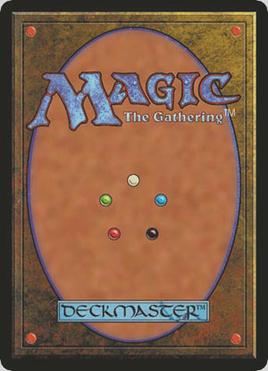I remember when I first told someone that I played the fantasy cardgame Magic: The Gathering. That was nearly a decade ago now, and the excruciating set of emotions I experienced then have faded, but I still don’t tell many people this. To the best of my knowledge, none of my colleagues know that I play what many call a children’s card game, where you draw ‘mana’ from your lands and use it to cast spells and summon creatures with which to defeat your opponent.
This post makes such a hobby public, and the fact I feel able to write it testifies to the shift in culture that has occurred since the late 2000s. Nowadays, you can buy boardgames in high-street bookstores, and millions watch elite competitions in the electronic versions of fantasy cardgames (like Hearthstone, Gwent, Eternal, and now Magic too).
Rather than explain Magic in detail, I thought I’d focus on one coincidental overlap between the game and my research. The weekend that my research leave began, a new set of cards was released. These cards allowed you to cast spells and summon creatures associated with the plane of Ravnica. Ravnica is an ecumenopolis, a city which fills an entire world, apart from one or two wilderness areas. The concept is an old one in fantasy and science fiction literature, but it works particularly well with Magic‘s core game mechanic, the division of all cards into one of five colours of mana: white, blue, black, red, green, arranged in a pentagram as displayed on the back of every card.

Every colour has an identity, a set of concepts associated with it, some shared with its neighbours and all the reverse of those connected to the colour opposite it.

The genius of this system is that it is a system to think with, and some have already considered how it might be applied to, say, psyhological profiles. This includes the game itself, as each set of cards applies these five colours to a specific world. Thus on Theros, a world modelled on Ancient Greek mythology, satyrs are red or green, the denizens of the underworld are summoned with black magic, sirens are blue, and hoplites and phalanxes white. On Innistrad, a world of gothic horror, vampires are black and red, zombies blue and black, werewolves red and green, and the few terrified humans (along with their ghosts) are associated with white mana.
Now the overlap of Magic‘s Ravnica cards and my research concerns the colour identity of actors. Not only is Ravnica a ecumenopolis, it is also home to guilds: each guild brings together two of Magic‘s colours of mana, with the choice of colours corresponding to the role of that guild. Thus the Azorius guild, responsible for lawkeeping, are white and blue; the Orzhov syndicate, the priests of Ravnica, are black and white; the Golgari swarm, the world’s rubbish disposal team, green and black; and so on. One guild is the actor’s guild, the Rakdos. Their colours are red and black.
At first, this might seem a bit unintuitive: surely acting is blue, the colour of intelligence and research? Or maybe it is green, the colour of instinct and nature? But red and black makes excellent sense for one reading of an actor: the performer is self-centred, focussed on his or her duplicitous expression for personal gain (very black); and performance itself is short-lived, active and emotional (very red). Theories of acting which emphasise an actor’s coldness are closer to the black magic of this identity (Diderot’s Paradoxe, for instance) and those which emphasise an actor’s sensibility are much more red (Saint-Albine’s Comédien).
There is one final element to this. As well as through the use of colour, Magic will often make use of other game mechanics to tie groups of cards together. In the case of the red and black Rakdos guild, their mechanic is called ‘Spectacle’, and provides a bonus to the player who is able to cast any spell with this word on it after having dealt damage to their opponent. Here is an example:

Once more, this is a clever interpretation of spectacle. The bonus awarded makes the effect of the card more, well, spectacular. And we might imagine that this is the result of a wizard, like the creatures he summons, making particularly good, improvisatory use of the situation he or she is currently in. Yet, the old theatrical dichotomoy between thought and feeling obtains here too. In order to achieve spectacle, one must prepare for it by inflicting damage on the opponent, one must plan ahead and think carefully about the situation. It is as much about thought as emotion.
This post grows long, but I hope it offers an insight into the richness of the game. I continue to play it for that richness, either conceptually in the application of its colour philosophy to new worlds, or more practically for the strategic depth that every game and deck contains.